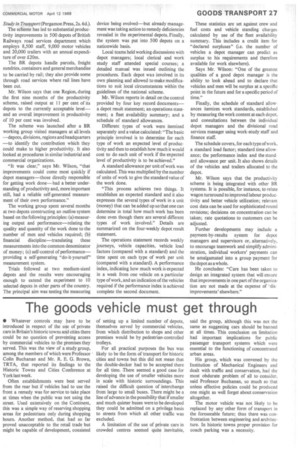The goods vehicle must get through
Page 29

If you've noticed an error in this article please click here to report it so we can fix it.
• Whatever controls may have to be introduced in respect of the uSe of private cars in Britain's historic towns and cities there could be no question of preventing access by commercial vehicles to the premises they served. This was the view of a study group, among the members of which were Professor Colin Buchanan and Mr. R. E. G. Brown, TRTA, that reported its findings to the Historic Towns and Cities Conference at York last week.
Often establishments were best served from the rear but if vehicles had to use the front a remedy was for service to take place at times when the public was not using the street. Used extensively on the Continent, this was a simple way of reserving shopping areas for pedestrians only during shopping hours. Another method, that had so far proved unacceptable to the retail trade but might be capable of development, consisted of setting up a limited number of depots, themselves served by commercial vehicles, from which distribution to shops and other premises would be by pedestrian-controlled trolleys.
For all practical purposes the bus was likely to be the form of transport for historic cities and towns but this did not mean that the double-decker had to be accepted there for all time. There seemed a good case for developing the use of smaller vehicles more in scale with historic surroundings. This raised the difficult question of interchange from large to small buses. There might be a line of advance in the possibility that if smaller and much quieter buses were to be developed they could be admitted on a privilege basis to streets from which all other traffic was excluded.
A limitation of the use of private cars in crowded centres seemed quite inevitable,
said the group, although this was not the same as suggesting cars should be banned at all times. This conclusion on limitation had important implications for public passenger transport systems which were essential to the functioning of concentrated urban areas.
His group, which was convened by the Institution of Mechanical Engineers and dealt with traffic and conservation, had the most obdurate problem of all to consider, said Professor Buchanan, so much so that unless effective policies could be produced one might as well forget about conservation altogether.
The motor vehicle was not likely to be replaced by any other form of transport in the foreseeable future; thus there was confrontation between engineering and architecture. In historic towns proper provision for coach parking was a necessity.




































































































